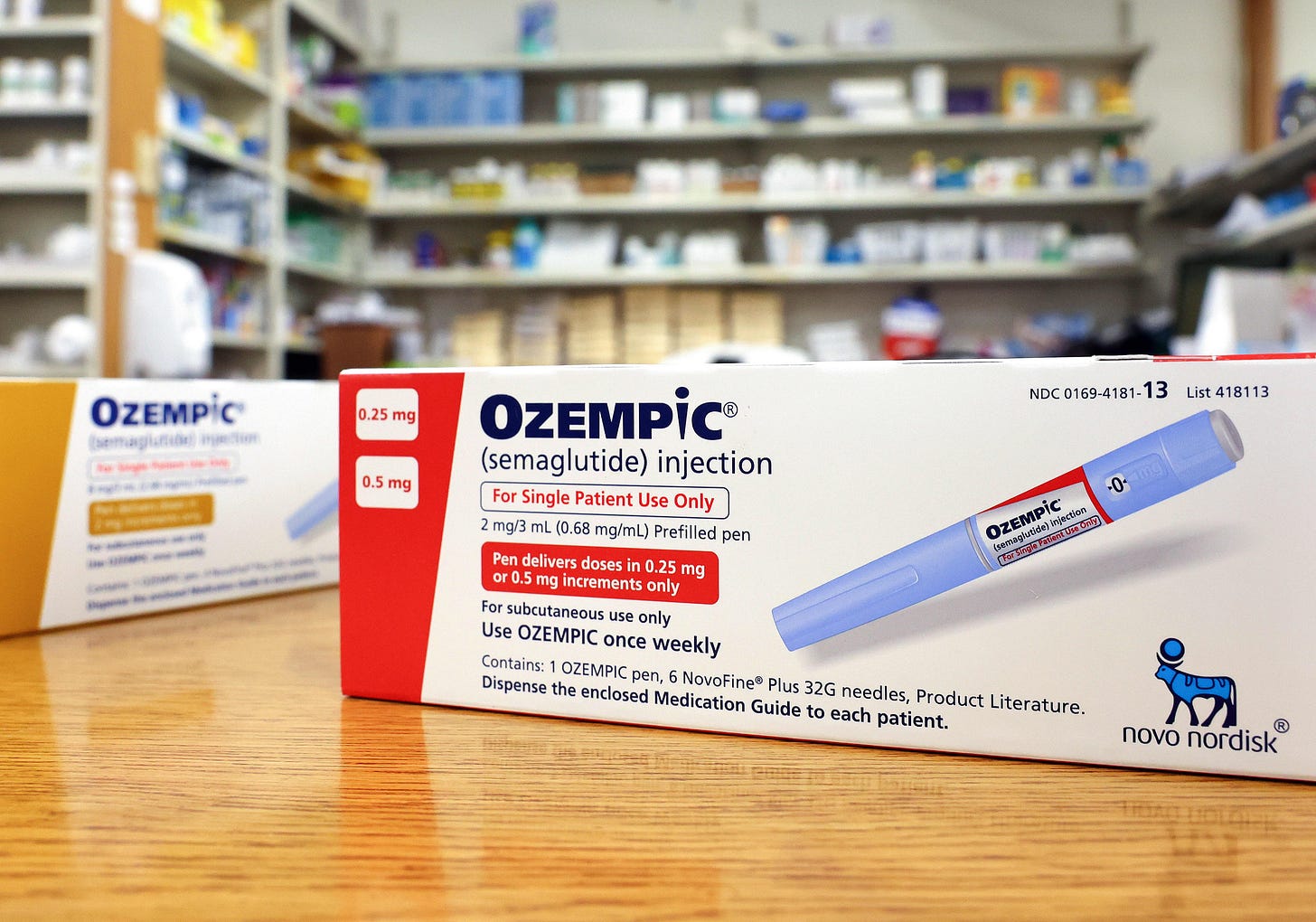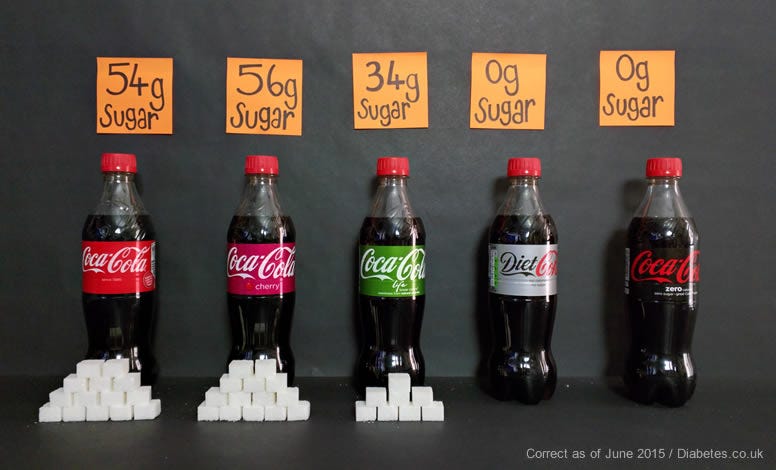The U.S. Health Crisis
How Big Food and Big Pharma Are F*cking Us Up
On my flight back from a wedding in Southern California, I listened to an episode of the Invest Like the Best podcast where Patrick interviewed Justin Mares, a serial entrepreneur building businesses to promote healthy living. I want to share some of the big takeaways so that you are aware of the horrifying trends that go on in the food industry.
If you're interested in learning more, please listen to the episode below:
Big themes
American people are getting sicker than they were 50 years ago because of pollution, lower-quality ingredients, and government policy.
Big pharma and big food companies are distorting our understanding of what's harmful and what's good for our bodies in hopes of making more money off us.
The United States can face structural decline as a country if we continue to burden the healthcare system.
How we got here?
Fifty to sixty years ago, there was far less obesity and fewer chronic diseases in the United States
What has changed? The amount of processed foods and the increased usage of pesticides. After World War II, the U.S. faced a food shortage. The government wanted to guarantee our own food supply, so they provided subsidies for corn, soybeans, and wheat, artificially driving down the price and causing the production of these crops to explode. As a result, farmers and big food manufacturers started using cheaper inputs: Soybean and canola oil adoption exploded. Big food manufacturers switched from using real sugar to high fructose corn syrup.
Today, the average American gets 20% of their daily calories from toxic soybean oil compared to 0% in the 1960s. The intention to encourage the production of these stable grains was not evil, but the consequences have hurt the health of the American population over time. Justin mentioned that $210 billion in subsidies has been spent on corn, soy, and wheat since 1995, while tobacco receives 4 times more government subsidies than all fruits and vegetable crops combined.
These changes are also financially driven; the food manufacturing industry is concentrated in 6-7 big companies. They can swap out whole ingredients for processed versions that are artificially pushed down in price due to government subsidies. This allows the manufacturers to increase their margins, so they are incentivized to give you unhealthy products. They have the financial resources to engineer the perfect artificial taste and packaging to keep you coming back for more. Then, they have more money to invest in marketing, creating a virtuous cycle for the companies and a vicious cycle for the consumers and the healthcare system.
With the scale and big cash pile, Big Food and Big Pharma spend heavily on research to confuse people, similar to what the big cigarette companies did 50 years ago. They fund tens of thousands of nutrition studies to create confusion among consumers. Justin highlighted there have been over 50,000 sponsored nutrition studies in the last two years alone. For every $1 the NIH (National Institutes of Health) spends on research, big food spends $11 on nutritional research. It's no wonder we are so confused about whether a food item is good for us. As we get confused, we might as well keep consuming these products since we don't know any better.
This is relevant as the World Health Organization (WHO) is finally stating that aspartame, an artificial sweetener found in diet soda, can be cancerous. I read an article that says when aspartame was approved by the FDA during the Reagan administration in the '80s, the CEO of the company that discovered aspartame, Donald Rumsfeld, who later became the Secretary of Defense, played a role in the approval.
The good thing is we are exporting this dietary lifestyle to China, and China is starting to see negative health impacts within its population, with a rise in diabetes and other conditions. At least we are going down together as Earth's people. I didn’t touch on the everywhere-ness of bubble tea shops in China in my China observation article. Bubble tea shops are ubiquitous. Most of the shops don’t use quality ingredients, so it's essentially sugar water with chemical coloring in a plastic cup. But man, I see Chinese kids all holding one and hanging out in the mall on the weekends. That can't be good for their health.
Ozempic
Justin believes that Ozempic is going to be one of the most profitable drugs ever because of its recurring revenue model: Patients have to keep injecting it for the rest of their lives (similar to Botox). He is also seeing a push to prescribe Ozempic to overweight teenagers. From a business standpoint, think about the lifetime value of a customer. Assuming the 12-year-old lives to 80 years old, that's 68 years of subscription revenue just from Ozempic. It's not possible to stop the subscription: if you stop, you will gain the weight back. Furthermore, using Ozempic doesn't fundamentally fix the health issues associated with obesity. Based on early studies, 30-40% of the weight loss achieved by using Ozempic comes from the loss of muscle weight and bone density.
If someone loses weight in a more "organic" way (ie. resistance training), they gain muscle, which can absorb glucose intake and help prevent diabetes. Instead, Ozempic users become weaker: their bones become less dense, and they face a whole new class of health problems. They cannot withstand the glucose impacts of their poor diet because they are not changing their lifestyle to pursue a healthier life.
On Investing in Healthy Consumer Businesses
Healthy consumer businesses are not a good place to invest in. Justin candidly highlights three challenges that healthy consumer startups face (refer to my 7 Powers article to refresh your memory on competitive analysis framework):
Higher ingredient costs: The startup needs to source organic, better-quality ingredients that do not have government subsidies, which leads to a more complex supply chain and higher costs.
Big food companies have big marketing budgets and brand recognition: Big Food companies have the bargaining power to push down their ingredient cost and can outspend startups on ads and packaging to attract consumers.
Startups have to compete for shelf space, whereas Big Brands have the scale advantage. Retailers like Walmart and Safeway are more inclined to fill their shelves with well-known brands to drive store traffic. Disruptors, by definition, don't have a well-established brand and probably won't produce enough volume to earn prime shelf space. However, this is less of an issue nowadays as many disruptors go direct-to-consumer (DTC) using the internet which has infinite virtual shelf space.

Justin emphasized that the only way to succeed as a startup in this industry is by focusing on areas where big food companies cannot make a move, which sounds exactly like counter-positioning.
One example he mentioned is how one of his businesses became viable by building a supply chain from the ground up that is so different from how incumbents do it that the incumbents don't want to revamp their own supply chain to counter it. Mission accomplished.
Water
Justin believes water is going to be a major health trend over the next few decades. He expects a significant link between PFAS (forever chemicals) and terrible health conditions such as cancers, infertility, and neurological conditions. These chemicals tend to accumulate in body parts with the highest rates of cancer in the last 20 to 30 years, such as the prostate, testes, breasts, etc.
Studies have shown even a small amount of 0.1 part per billion of glyphosate (herbicide) in the water can alter gene function and cause severe organ damage in rats. Twenty-eight countries have banned glyphosate, and the EU limits exposure to glyphosate to very small amounts. The US water toxin regulation is loose, permitting 700 parts per billion (compared to the EU's limit of 0.1 part), making the US 7000 times more tolerant than the EU. 100% of cereals have massive amounts of glyphosate. There are high tolerances of glyphosate in US tap water, shower water, and the seafood we consume.
In the US, we assume most chemicals are safe until proven otherwise at certain doses. The EPA and FDA rely on vendors to do self-reported safety studies. Once a chemical is shown to be safe, it can be used in products as desired. There is no regulatory body in the US that takes a hard look at these issues. In the EU, they assume novel chemicals are concerning until proven otherwise.
It's challenging to avoid toxic substances in daily life, but there are things we can do, such as ensuring clean ingredients (eg. No PFAs) in daily products you use and implementing a water filtration system at home.
Healthcare System
Justin believes that big food companies are not paying for the negative externalities of their products. Similar to companies in the 1960s-70s that polluted rivers without paying for the resulting health effects on affected communities, regulation eventually came with explicit financial consequences.
For example, Coca-Cola can price its products so cheaply because the healthcare system ends up bearing the financial burden of the health issues (such as diabetes) that arise from consuming its products, with taxpayers ultimately footing the bill.
Every player in the healthcare and food system makes more money when a consumer is sick, as a healthy person simply pays insurance premiums and rarely interacts with the healthcare system. Only 3% of healthcare spending is allocated to prevention, while the remaining 97% is spent on treating individuals after they get sick, often focusing on treating symptoms rather than addressing underlying conditions.
The entire country gets sicker as people rely more and more on prescriptions. What's left unsaid, or perhaps I missed it, is that the right way to address health issues is by having people focus on preventing: eating better and exercising more. If people continue to live their current lifestyles, the United States is at risk of becoming non-competitive.
Thanks for reading. I will talk to you next time.
If you want to advertise on my newsletter, contact me 👇
Resources for your public equity job search:
Research process and financial modeling (10% off using my code in link)
Check out my other published articles and resources:
📇 Connect with me: Instagram | Twitter | YouTube | LinkedIn
If you enjoyed this article, please subscribe and share it with your friends/colleagues. Sharing is what helps us grow! Thank you.










Great article Richard, excited to read more!
Frightening. Great post, thank you